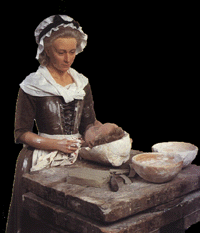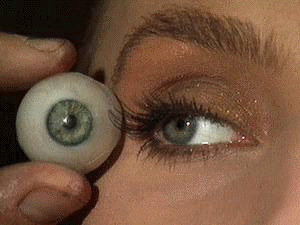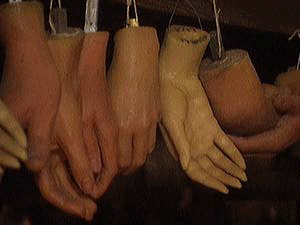
 Madame Tussauds
Madame Tussauds

 Making the Wax Portraits
Making the Wax Portraits
For years, celebrities have been received in the private studio of Madame Tussaud's exhibition to have measurements and photographs taken that will be used to help create a realistic wax replica.
The character's hands are always modelled from real life. The original modelling is done in clay, and a plaster 'negative' taken from which the wax version is cast. Eyes, makeup and real human hair are added by different experts. The models are then assembled and clothed by a wardrobe mistress. Many subjects have donated clothes for their likeness to enhance authenticity. Surprisingly, it can take up to six months to complete a figure.
 The Chamber of Horrors
The Chamber of Horrors
Before Madame Tussaud's exhibition settled in London, she toured the country with the models for many years. Alongside her portraits of villains and murderers she exhibited her collection of relics from the French Revolution, which proved popular with the public.
These included the death masks of French nobility and the Guillotine blade that was used to behead Marie Antoinette.
These characters were kept in an area known as 'The Separate Room', so that visitors with a nervous disposition could avoid them. The name, 'Chamber of Horrors', was taken from an 1846 article in Punch magazine. A spooky reconstruction of one of the streets of London stalked by Jack the Ripper forms the centrepiece of the exhibiton. One of his six victims - Catherine Eddowes - lies in a pool of blood. Other scenes show mass murderers including John Christie, Dr Crippen, John George Haigh, Gary Gilmore,